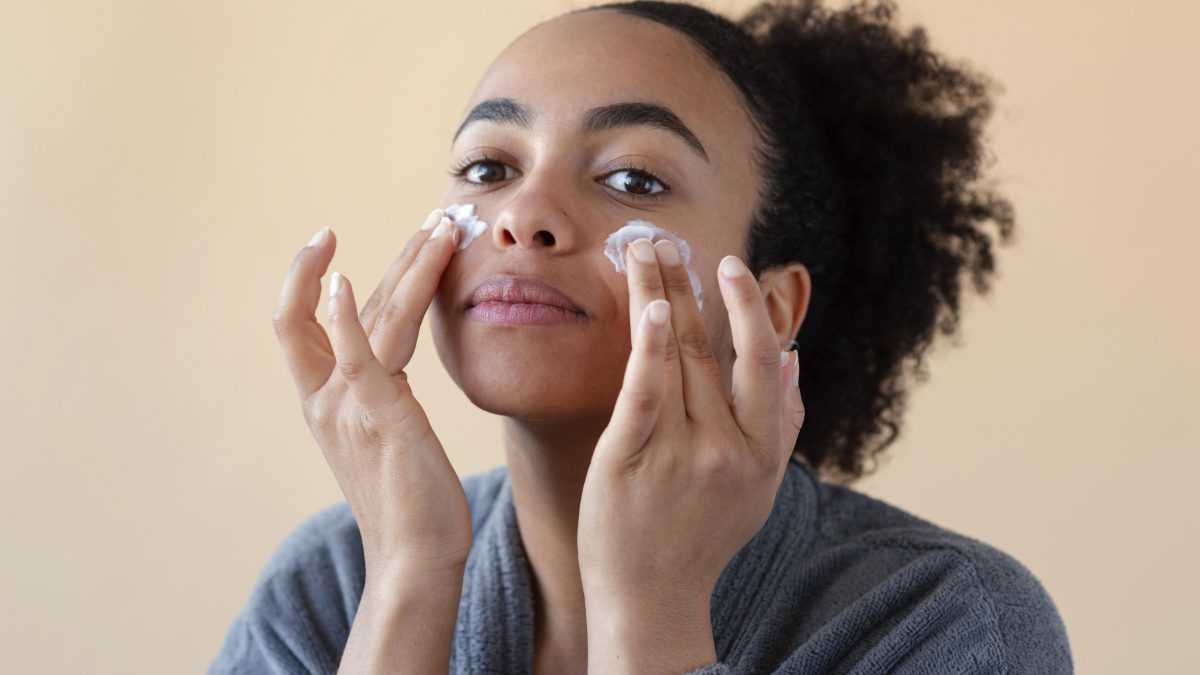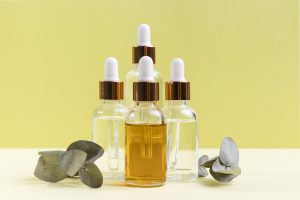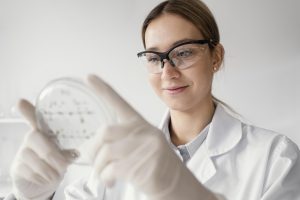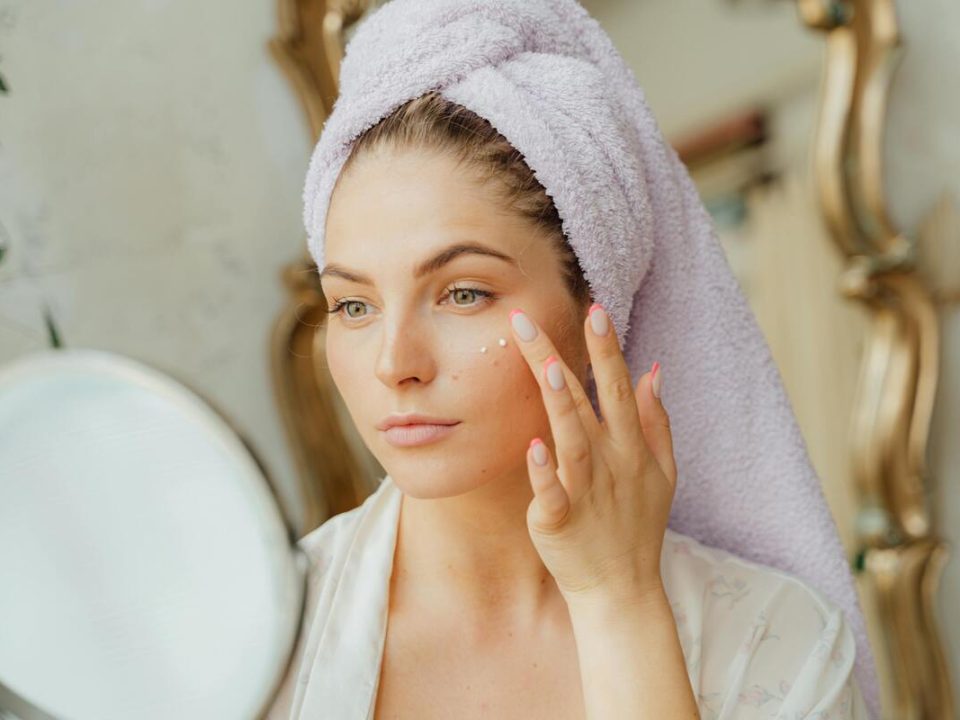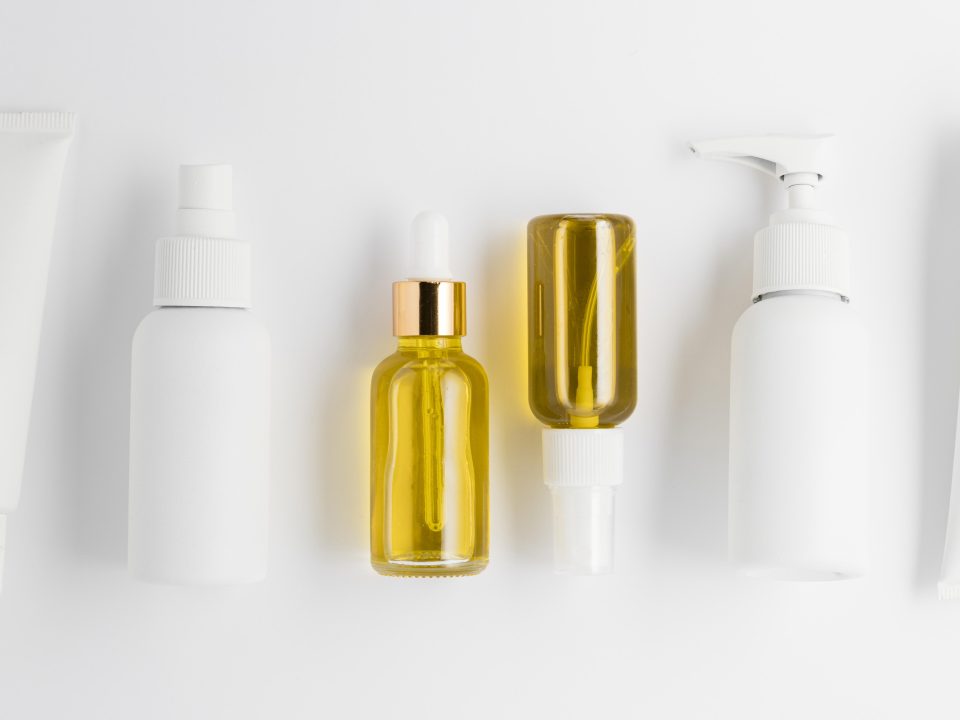
What Is Salicylic Acid Mainly Used For?
January 26, 2024
Does Salicylic Acid Fade Dark Spots?
February 5, 2024The tiny black dots peppering your nose and chin might seem like trivial foes, but for many, blackheads wage a relentless war against the dream of clear skin. A 2017 study found that nearly 80% of people struggle with acne, with blackheads being a common concern. These pesky bumps arise from clogged pores, where sebum (oil) and dead skin cells form an unwelcome alliance. But fear not, brave warriors of complexion! This article delves into the world of blackhead-busting, specifically focusing on a potential hero: salicylic acid. We’ll dissect its properties, explore research on its effectiveness, and equip you with the knowledge to wage a winning battle against blackheads. Prepare to shed light on the science behind these dark dots and uncover the truth about salicylic acid’s power in the quest for a clearer, more confident you!
Salicylic Acid: A Potential Solution?
Salicylic Acid: A Knight in Shining Armor Against Blackheads?
For centuries, blackheads have been the unwelcome tenants of our noses and chins, whispering promises of frustration to anyone dreaming of a clear complexion. But hope emerges in the form of salicylic acid, a potential knight in shining armor in this skincare saga. Before we sing its praises and hail it as the ultimate blackhead vanquisher, though, let’s peel back the layers and understand its inner workings. This keratolytic crusader wields the power to dissolve the very walls of blackhead fortresses, exfoliating dead skin cells and unclogging pores. But like any potent weapon, understanding its strengths and limitations is crucial before embarking on any grand battles against these tiny dark dots. Stay tuned, adventurer, as we delve deeper into the science of salicylic acid and uncover its true potential in the quest for a clearer, more confident you!
The Keratolytic Crusader
Salicylic acid isn’t just another cleanser; it’s a keratolytic agent, meaning it has the power to dissolve keratin, the main protein building block of our skin. This ability comes in handy when dealing with blackheads. Imagine the sebum and dead skin cells clogging the pore as a tangled mess of yarn. Salicylic acid acts like a magical knitting needle, skillfully loosening and dissolving these keratin threads, allowing the clog to break apart and loosen its grip on the pore. This exfoliation process not only helps clear existing blackheads but also prevents future formation by keeping the “yarn” from getting too tightly woven in the first place.
Forms Fit for the Battlefield
Salicylic acid, a powerful warrior against blackheads and blemishes, comes in diverse forms, each serving as a specialized unit in your skincare army. Let’s delve deeper into their unique strengths and battle formations:
Light Cavalry: Liquid Cleansers
Description: Think gentle foot soldiers, patrolling the surface of your skin. These lightweight cleansers are ideal for daily use, washing away excess oil, dirt, and dead skin cells that can clog pores.
Strengths: Gentle enough for even sensitive skin, non-comedogenic, refreshing and invigorating.
Best for: Daily use, preventing breakouts, mild blackheads.
Rapid Response Unit: Face Washes
Description: Imagine a squad equipped with slightly heavier artillery. Face washes pack a slightly higher concentration of salicylic acid, targeting deeper clogs and blemishes with more precision.
Strengths: More effective than cleansers for tackling existing blackheads, removes makeup and impurities, often enriched with additional skincare benefits.
Best for: Oily skin, occasional breakouts, moderate blackheads.
Sharpshooters: Facial Pads
Description: Think elite marksmen, taking down individual targets with pinpoint accuracy. Pre-soaked facial pads come saturated with salicylic acid, perfect for spot-treating blemishes or providing a quick refresh on the go.
Strengths: Convenient and portable, ideal for targeted treatment, mess-free and easy to use.
Best for: Spot-treating blackheads, targeting blemishes, travel-friendly routine.
Siege Engines: Creams and Gels
Description: Imagine powerful siege weapons laying siege to stubborn enemies. Creams and gels offer sustained-release salicylic acid, providing prolonged contact with the skin to break down even the most persistent blackheads.
Strengths: Deeply penetrate pores, provide long-lasting effectiveness, some medicated creams can treat inflammatory acne.
Best for: Stubborn blackheads, oily skin, inflammatory acne (with medicated creams).
Choosing Your Champions
The optimal form for you depends on your unique battlefield:
Skin Type: Oily or acne-prone skin benefits from face washes or cleansers, while dry or sensitive skin might prefer creams or gels.
Blackhead Severity: Mild concerns can be addressed with cleansers or pads, while deeper clogs require creams or gels.
Personal Preference: Choose a format that suits your lifestyle and routine. Pads are convenient, washes are refreshing, and creams offer deeper action.
Remember: Consulting a dermatologist is crucial for personalized guidance. They can assess your skin’s needs and recommend the most effective salicylic acid warriors for your unique battlefield. With the right strategy and the right forms, you can achieve victory over blackheads and conquer clear, radiant skin!
Concentration: A Delicate Dance
Not all salicylic acid is created equal. Its concentration is key to its effectiveness and safety. For blackheads, 1-2% concentration is the sweet spot. This provides potent exfoliation without overwhelming the skin or causing excessive irritation. Imagine this as the ideal sword size – sharp enough to cut through the blackheads but light enough for precise maneuvering.
Higher concentrations, up to 10%, might be used for tougher comedones but come with an increased risk of side effects like dryness, redness, and peeling. Think of them as heavy artillery – effective but requiring caution and expert handling. Always start with a lower concentration and gradually increase if needed under the guidance of a dermatologist.
Remember, salicylic acid isn’t a magic bullet. It takes time and consistency to see its full effect. Patience and proper usage are crucial for a victorious outcome in the struggle against blackheads.
In the next chapter, we’ll delve into the research behind salicylic acid, examining its effectiveness compared to other blackhead-busting agents and exploring the factors that can influence its success. Get ready to arm yourself with the knowledge to make informed choices in your pursuit of a clear and confident complexion!

Research and Evidence: Unveiling the Science Behind Salicylic Acid’s Blackhead Battle
Salicylic acid, the keratolytic knight from our previous encounter, confidently stands with its sword drawn against the blackhead menace. But before we hail it as our champion, let’s delve into the scientific realm and meticulously dissect the evidence behind its claims. We shall uncover whether its victory cry echoes with the resounding thrum of well-founded research or merely fades into the air like an empty boast.
The Accusation: Blackheads and Their Treacherous Reign
Blackheads, those tiny, dark specks on the nose and beyond, are the unwelcome guests at the banquet of clear skin. They arise when dead skin cells and sebum (oil) get trapped inside pores, oxidize upon contact with air, and voila – a blackhead emerges, casting its shadow upon your complexion. They can be stubborn adversaries, refusing to budge under the gentle persuasion of regular cleansing.
The Defender: Salicylic Acid, the Keratolytic Crusader
Salicylic acid, a beta hydroxy acid (BHA), arrives brandishing its weapon: keratolysis. This fancy term simply means it has the power to break down keratin, the protein that forms the building blocks of skin. By dissolving the bonds between these cells, salicylic acid loosens the dead skin cells and sebum trapped within the pore, effectively dismantling the blackhead from within.
The Trial: Unveiling the Scientific Evidence
Now, for the crucial part – does the research support salicylic acid’s effectiveness? The answer, fortunately, is a resounding yes. Here’s a glimpse into the scientific courtroom:
Exhibit A: Double-Blind, Randomized Controlled Trials: Multiple studies have compared salicylic acid treatments to placebos or other acne medications. These trials, considered the gold standard in scientific research, consistently show that salicylic acid is significantly more effective in reducing blackheads compared to both placebos and even some other acne treatments.
Exhibit B: Mechanisms of Action: Research has shed light on the precise mechanisms by which salicylic acid exerts its power. Studies have shown that it:
Exfoliates the skin’s surface, preventing dead skin cells from clogging pores.
Reduces sebum production, further minimizing pore blockage.
Has anti-inflammatory properties, calming irritated skin often associated with blackheads.
Exhibit C: Long-Term Safety and Tolerability: Salicylic acid is generally considered safe and well-tolerated, even for sensitive skin. However, side effects like dryness, irritation, and stinging can occur, especially with higher concentrations or frequent use.
The Verdict: A Worthy Defender, but Caution Advised
The weight of evidence clearly demonstrates that salicylic acid is a powerful and effective weapon in the battle against blackheads. However, it’s important to remember that:
Individual results may vary depending on skin type and the severity of blackheads.
Patience is key. Consistent use for several weeks is often necessary to see significant results.
Start with lower concentrations and gradually increase as tolerated to minimize side effects.
If irritation persists, discontinue use and consult a dermatologist.
In Conclusion:
Salicylic acid, backed by robust scientific evidence, emerges as a valiant defender against the blackhead menace. However, like any good battle, approaching it with knowledge, caution, and the right strategy is crucial to secure victory for your complexion. Remember, consult a dermatologist for personalized advice and a customized skincare plan to banish blackheads and reclaim your kingdom of clear skin.
Clinical Studies: Fact-Checking the Salicylic Success Story
Numerous studies have investigated salicylic acid’s effectiveness against blackheads, presenting a spectrum of findings:
A 2020 double-blind, randomized controlled trial compared a 2% salicylic acid cleanser to a placebo wash in adults with mild to moderate facial acne. After 12 weeks, the salicylic acid group displayed a significant reduction in blackhead count compared to the placebo. This visualizes the cleanser’s ability to clear existing clogs and prevent new ones from forming.
A 2015 study evaluated the efficacy of a combination product containing 2% salicylic acid and 1% glycolic acid in treating blackheads and whiteheads. After 8 weeks, participants experienced a noticeable decrease in both types of comedones, highlighting the potential of combined exfoliating agents.
However, not all studies paint a universally rosy picture. Some note the need for longer treatment durations or higher concentrations for more persistent blackheads. This emphasizes the importance of individualized treatment plans and realistic expectations.
Comparative Analysis: Salicylic Acid in the Arena of Blackhead Busting
Salicylic acid isn’t the only contender in the fight against blackheads. Let’s see how it fares against fellow warriors:
Benzoyl peroxide: This powerful agent targets acne-causing bacteria and helps regulate sebum production. Studies suggest it might be slightly more effective for inflammatory acne with pustules, while salicylic acid shines brighter for non-inflammatory comedones like blackheads. Think of them as specialized forces – benzoyl peroxide for the fiery battle against inflamed acne, and salicylic acid for the strategic dismantling of blackhead fortifications.
Retinoids: These vitamin A derivatives promote skin cell turnover and unclog pores. They might be slower-acting but are effective for a broader range of acne types, including blackheads, whiteheads, and inflammatory lesions. Imagine them as long-term city planners, slowly remodeling the pore landscape to prevent blockages from the roots.
Choosing the right weapon depends on your specific enemy – the type and severity of your acne. Consult a dermatologist to strategize the optimal treatment combination for your unique skin needs.
Individual Variability: The Terrain Matters
Like any battlefield, the success of salicylic acid hinges on the terrain. Here are some factors influencing its effectiveness:
Skin type: Oily skin tends to respond better than dry skin, which might find higher concentrations harsh and drying. Consider your skin’s natural hydration level and adjust the salicylic acid dosage accordingly.
Blackhead severity: Stubborn, long-standing blackheads might require a higher concentration or a multi-pronged approach with other modalities like chemical peels. Think of them as heavily fortified castles requiring siege engines and strategic maneuvers.
Underlying conditions: Sensitive skin or conditions like rosacea might be more susceptible to salicylic acid’s irritative side effects. Proceed with caution and consult a dermatologist before applying it if you have concerns.
Remember, individual variability is the wild card in this fight. Be patient, monitor your skin’s response, and adapt your strategy as needed for optimal results.
Conclusion: Demystifying the Blackhead Battle with Salicylic Acid
We’ve traversed the winding paths of blackhead biology, explored the science behind salicylic acid, and unearthed valuable research regarding its effectiveness. Now, it’s time to synthesize our learnings and forge a path toward clearer skin.
Salicylic Acid: A Worthy Weapon, but Wield with Wisdom
The evidence, while not always definitive, paints a promising picture. Salicylic acid, with its keratolytic prowess, can be a valuable tool in battling blackheads. It exfoliates dead skin cells, unclogs pores, and prevents future blockages. Its various forms cater to different needs, and its effectiveness often increases with higher concentrations (within reasonable limits).
However, salicylic acid isn’t a magic wand. Realistic expectations are key. It requires consistent use, patience, and sometimes, adjustments to dosage or even alternative approaches.
Remember, individual variability plays a crucial role. Skin type, blackhead severity, and underlying conditions can influence its success. Consulting a dermatologist is always recommended for personalized guidance and a treatment plan tailored to your unique skin concerns.
The Final Strike: Embracing Clearer Skin
While the battle against blackheads may require strategic planning and persistence, remember that clearer skin is attainable. Salicylic acid, alongside other acne-fighting agents, offers a powerful weapon in your arsenal. Embrace knowledge, wield it wisely, and march towards a complexion you can be proud of.
This journey doesn’t end here. Continue to educate yourself, stay informed about advancements in skin care, and prioritize gentle yet effective strategies for your skin’s health. With the right approach, you can vanquish those pesky blackheads and claim victory in the pursuit of a radiant, thriving complexion.
Go forth, armed with knowledge and empowered to choose the most effective blackhead-busting weapons for your unique skin!

